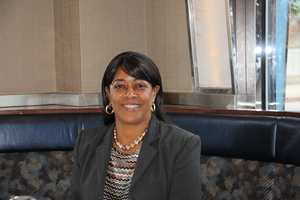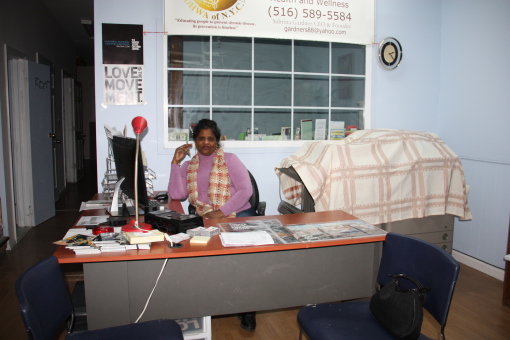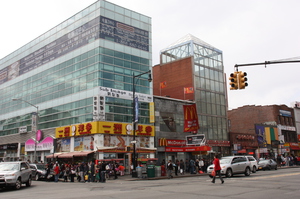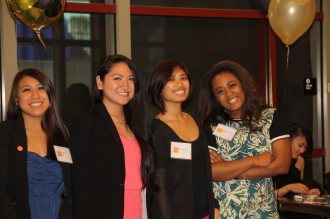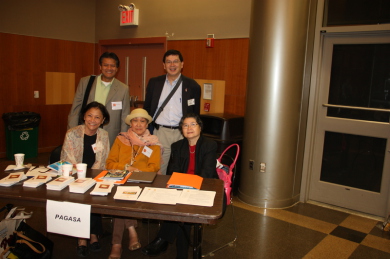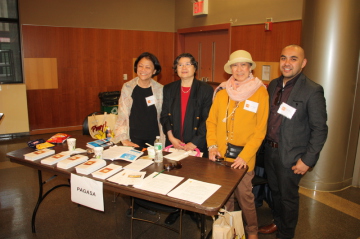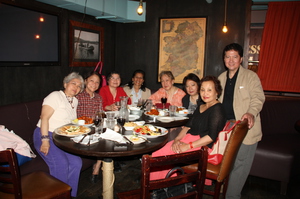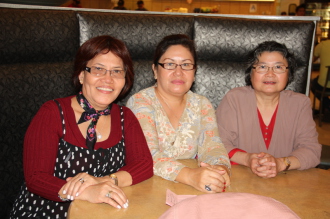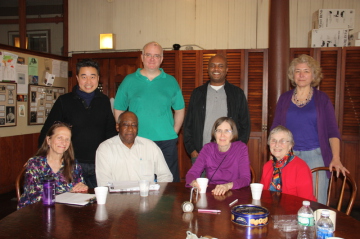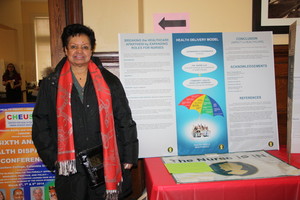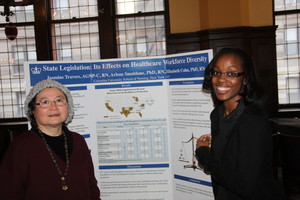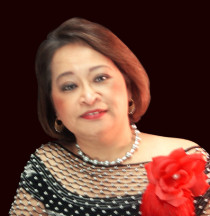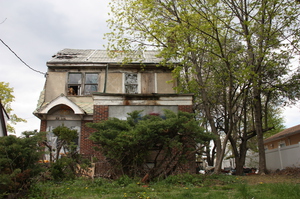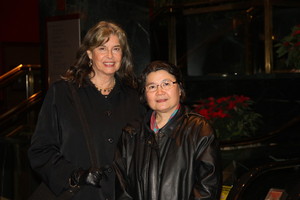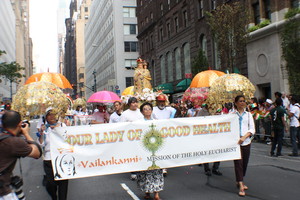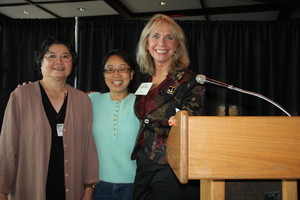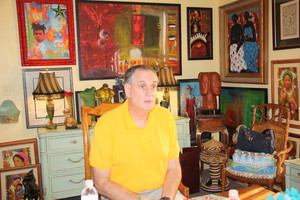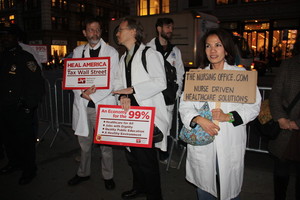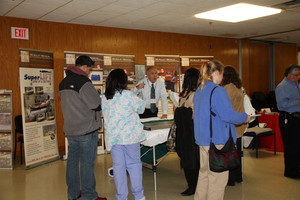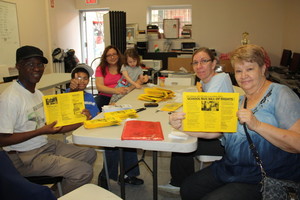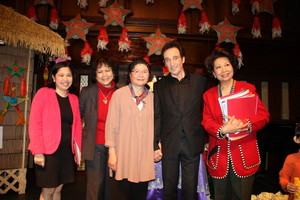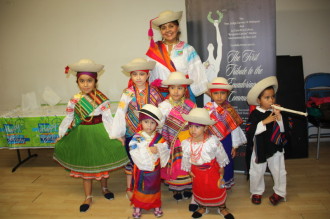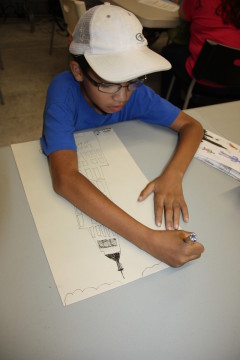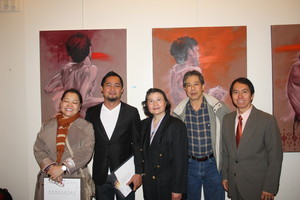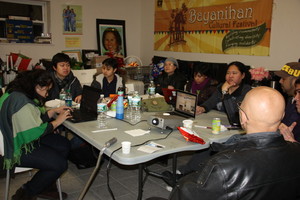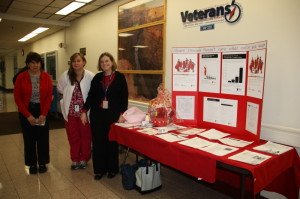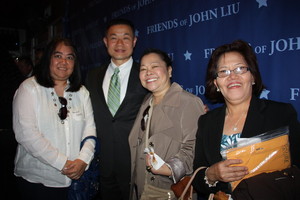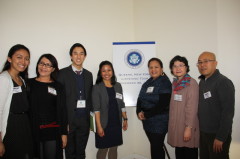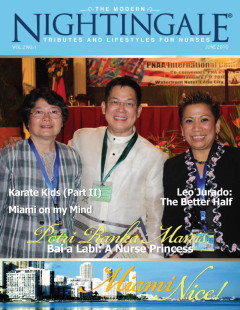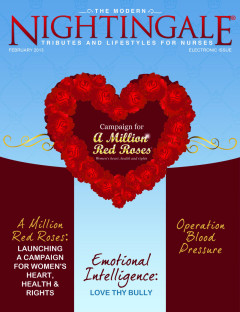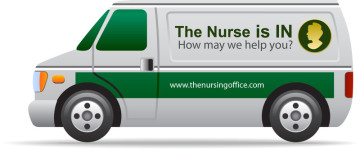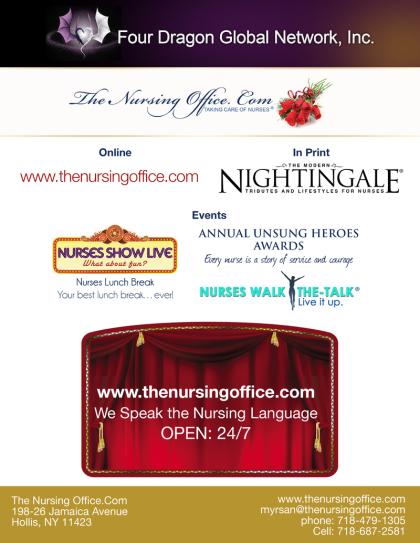Harm Reduction Model Towards Ending the AIDS Epidemic
In the Beginning: Breaking Through HIV-AIDS
I first saw this young immigrant Filipino man in the prime of his life (who used to work in a Wall Street firm), bed-ridden with an illness called AIDS. My heart went out to him, like he was my own family. Together with friends Gilda and Angela, we brought him food—comfort Filipino food that he had grown up with, requested through a mutual friend. He was very secretive and skeptical of all who visited, as he was hiding his condition from being known by family back in the Philippines. One of his parents was a political figure, a representative of a province that encompassed a small group of beautiful islands from among the Archipelago’s 1,707 islands.
Early on we came to know about other Filipino American men who were seriously ill with full-blown AIDS, whose families had abandoned them in fear and shame, who were either living alone or residing secretly with sympathetic partners
or friends. Via the proverbial grapevine, their need for Filipino comfort food reached the few of us who heard their plea. Our little group of friends went to their place bringing food like the
pumbrera that reminded them of home and family. For a while, we took the place of their absent mothers, fathers, sisters, brothers who refused to see or care for them and had abandoned them out of
ignorance, fear and
shame. There were few social services
available then for those who suffered like him. The last wish of this young Filipino man was, “Bury me under the shade of the Acacia tree,” meaning the tree back in his home in the Philippines. The
Acacia, native to tropical and subtropical regions of the world, is a beautifully gigantic tree, with leaves and branches spreading all around like a huge umbrella giving refreshing and cool shade.
To ancient Egyptians and Israelites, the sprig of acacia symbolizes the soul is immortal and the evergreen quality of the tree reflects the human spirit, the immortal part of us which can never
die.
This dying wish to rest under the Acacia is auspicious, as many happy moments of our childhood were spent enjoying its luxurious green shade. Like this young man’s soul
that longs to be at peace once again in the Acacia’s motherly embrace. In our HIV/AIDS work, the Acacia Tree grew into a symbol and inspired the project Acacia Fund, that nurse volunteer Gilda
Sambajon started and developed to help with end-of-life issues of people like our young Filipino man.
In a Holocaust of Ignorance and Fear, a Tree Grows
The dark night of the soul came with my first salaried job, teaching about HIV/AIDS in the early days of the epidemic. In September 1992, being the oldest among the twenty-five much younger Ivy league-trained Asian American women who applied as community health educator, I was also a new immigrant whose community was considered very high-risk. Filipinos were then dying of AIDS in alarming numbers in the Asian & Pacific Islander group in New York City. The disease was strange, weird, unknown, and fatal, with death seeping slowly as opportunistic infections come in rapid pace to ravage and weaken the body. No medicine was as yet known to cure or control. The only knowledge then was that the disease was transmitted by sexual contact and addicted drug injections. However, rumors were that AIDS was also carried by saliva, other fluids, and touching. All communities were locked in fear; HIV-infected individuals were catatonic, not knowing whether they will live or die soon. Authorities and government leaders were in denial even as death numbers piled up. Blame towards homosexuals who were first struck was rampant, and homophobia reigned over friendships, relationships, even simple encounters. The belief equation was that sex equals death.
Experiencing High Levels of Frustration and Discomfort with Language
There was no language to describe sexuality that is value-free, free from “sexhate” or “sexshame” (Antony Grey, 1993). We were very uncomfortable talking about sexuality and sex, much less to teach the subjects to mature adults. In our most personal levels, we as individual workers and volunteers had to re-examine our own beliefs on human sexuality, the kind that the mystic St. John of the Cross calls “Dark Night of the Soul.” We had to process our own sexhate and/or sexshame issues before we could express our ideas about it to others (in outreach, teaching or training), and change it to a positive attitude of “sexhealth.”
As I thrust myself into this new job,
the ignorance on precisely how the disease behaved threw a pall over us as we scrambled to find creatively gentle ways and means to pass on available information and tell people about unsafe sex, but
much less about needle exchange in drug use. We distributed condoms, explained its use in culturally proper ways, and dealt with communication barriers, such as, language, sexual taboos and
homophobia, in one-on-one outreach activities. Every day we would report back to our APICHA team that people refused to speak about sex. There was always anxious silence when the topic is brought up
and body language showed repugnance and disgust, or just downright verbal or physical rejection. Piled on top were our very high frustration and physical stress levels.
On local ethnic networks, the shame and stigma of HIV/AIDS most intensely confronted the healthcare professionals, like newly arrived nurses from the Philippines and
abroad, who were either uninformed or threatened by their families with divorce and separation if they worked in the hospital AIDS ward. Indeed, it was a most trying but challenging time for
discarding old, useless, harmful beliefs on stigma, judgment and shame and changing these into useful, pragmatic, beneficial beliefs that lead to virtues of acceptance, compassion and loving
kindness. It was also a frenzied time of planting seeds of comfort for those stigmatized and frightened, of opening doors that had been tightly closed, and letting in the fresh air of hope that,
given all we could do best, all will be well.
To the prevailing belief, a strong counterpoint had to be silence equals death. It was a strategic message to inform high-risk groups and stimulate the public to open
taboo topics, such as sex or death, for discussion in private, confidential
settings. There were hardly any source of knowledge or grassroots experience for guidance. We all had to get the facts ourselves via “boots on the ground,” to learn from “ground zero” so to speak, to
form basic assumptions, formulate theories, and try out different strategies that hopefully would work. As a group, we discussed and argued constantly before we tested each approach or strategy. We
asked people from other States on what they were doing to approach & educate people on the scourge of HIV/AIDS. It was like finding pieces of a puzzle scattered (or lost) all over the place, then
finding each piece, one by one to see what fits or does not fit the whole picture. The process was very tedious, mired in fear and doubt, even despair that clocks were ticking as infected people were
dying in secrecy or in ignorance. And worse, spreading the disease unknowingly, through vectors of unprotected sex and rampant drug use. But we were determined to find out. This resolve was our strength and only weapon in controlling, even eradicating, the disease and
saving more lives before it was too late.Following this counter message of
SILENCE=DEATH, our APICHA team designed educational curricula on expanding awareness and motivating action. We ran and held many HIV/AIDS 101 workshops for women, gay and straight men, LGBT youth,
anywhere we were welcomed and allowed in, to teach, train and hopefully change attitudes and behaviors. Consequently, we designed specialized training curricula & workshops for raising awareness,
improving personal attitudes, and learning communication skills to deal with urgent issues.
Volunteer Training was for recruits to
overcome fear and shame by knowing the latest science on HIV/AIDS, and how to talk about it in the positive context of sex as health. The Interpreters’ Training for volunteers and outreach workers
focused on ethics of translation and culturally competent language skills to utilize as well as actual translation of important medical/scientific terms into different Asian languages. Self-Defense
Training was for women outreach workers to build confidence in their own physical strength, communication skills & strategies to defend themselves and loved ones from violence due to
discrimination, stigma or socio-religious intolerance in their own family environment.
Digging & Rooting APICHA in the Filipino American
Ethos
An American-born Filipino man, John Manzon, was the first Executive Director of APICHA, Inc. (1989 – 1997) under sponsorship of The Family Health Project of Suki Terada Ports and five other Japanese- American women composed its Board. The clients, staff, outreach workers, volunteers, consultants, and supporters were multi-racial and represented large Asian & Pacific Islander groups. An immigrant Filipino American woman, Therese R. Rodriguez, currently heads what has grown into a Federally Qualified Health Center, named APICHA Community Health Center (apicha.org). It may be stated that these leaders’ Filipino ethnicity energized much impetus for digging in and rooting APICHA’s beginnings in the Filipino American community, abetted and encouraged by concerned Filipina nurses who served in hospitals and were eye witnesses to the ravages of the epidemic. Their leadership then continues to inspire us today, and we are proud that they are Filipino-Americans.
ALL HANDS ON DECK!
Our digging and rooting had to start somewhere to bring out the light of awareness. The ways from local to state to national to international exposure were demonstrated in the projects and/or activities:
TULAY HIV/AIDS Awareness Project – with PACEC, Inc. (Philippine American Community Executive Council) lead by Venilda G. Jaynal, first woman president of PACEC, the largest umbrella organization of Fil-Ams in Northeastern USA, and an enduring pillar of the New York Fil-Am community from the 70s to the 90s, who made it the cornerstone of her advocacy. “Tulay” means bridge in Tagalog, and the goal was indeed to build bridges. With support and resources from Gilda, Raquel, Ludy, Angela, John-John Manlutac, a nurse with the Filipino Advocacy Group, Claire Melendez (oncology nurse at Memorial Sloan Kettering & Silliman University Alumni Association New York), Jorge Ortoll & Ma-Yi Theater, this enabled the PIEMBRERA Project, with Gilda T. Sambajon, Angela Timtiman, and Ludy bringing Filipino food to young Fil-Am men with full-blown AIDS, until social services were made available through APICHA’s advocacy.
The ACACIA Fund was spearheaded by
Gilda T. Sambajon (assisted by Ludy, Irvi Sulit-Woo, John-John Manlutac, Gerry Compas, and others). With the Acacia Tree symbol, a yearly campaign was waged to provide end-of-life support services
and other necessities for people living with HIV/AIDS. There were Silent Auction events with plays by Filipino American artists & playwrights at May-Yi Theater in Manhattan, raising funds and
expanding networks in Asian groups around the City. Eventually the project concept was integrated into a service program within APICHA itself.
COALITION for the ADVANCEMENT of FILIPINO WOMEN, Inc. (CAFW) was organized by Raquel Zaraspe Ordonez and Dr. Fely Malanum-Santos, Irvi Sulit-Woo, Ludy Resurreccion as a
nonprofit 501c3, which collaborated with over 200 community partners and participating service providers and organized ground-breaking Health Fairs in five (5) boroughs to reach at-risk, high-risk
groups, like immigrants and low-income people. These health fairs also provided APICHA (a co-sponsor) much-needed outreach exposure. Gathered data for NYS Department of Health Office of Minority
Health on health care access resulted in the book, “Challenging the Health Care Apartheid: Equality and Equity for People of Color,” written by Raquel Z. Ordonez, MPA, as principal investigator, and
published 1995 with assistance from US HHS – Region II Office of Minority Health.
RUCKUS – led by young Japanese women teaching high-risk women skills and strategies how to avoid or to defend themselves against domestic violence from partners, family members, strangers. We designed the curriculum with approval of the NYS Dept. of Health and coordinated training workshops regularly for A&PI outreach workers and volunteers, that were well-attended and utilized to empower and protect the women during their community outreach work.
HEALTH PROFESSIONALS NETWORK (HPN), a
Filipino recruiting agency run by Joe Fermin in Queens, New York City, served as our frontline weapon to combat fear, stigma and discrimination by educating newly arrived Filipino nurses and other
healthcare workers on the basics of AIDS transmission, called HIV 101 workshops.
PREVENTION PLANNING GROUP (PPG), NYS AIDS INSTITUTE – Ludy Resurreccion, Raquel Ordonez and Indira Parmar, for eight years from 1996 – 2004, served as Chair, Co-chair & Members of the Immigrant Migrant Committee, where we advocated for and represented immigrants & migrants, the voiceless, underserved, and invisible groups who were at high-risk for HIV/AIDS from all parts of New York State. As participants and resource persons at nationwide conferences, our advocacy reached federal levels of government and large private foundations.
NGO FORUM ON WOMEN IN BEIJING 1995:
Looking At the World Through Women’s Eyes, APICHA panel presentation: “Impact of Migration, Sexual & Economic Exploitation on Asian & Pacific Islander Women in America – Focus on HIV/AIDS”
(by Ludy Resurreccion & Indira Parmar), 2 September 1995, Beijing, PROC. Finally, an international forum where a Filipina and an Indian women showed the form, shape and impact of HIV/AIDS among
Asian & Pacific Islander women in New York City, and the APICHA model of prevention and advocacy roles.
Three decades later, the young Filipino man’s spirit imbued in his Acacia Tree has truly grown its shade, like the phenomenal maturing of APICHA into a Community Health
Center, serving the once-invisible, voiceless people, and even contributing to the New York State plan, “Ending the HIV/AIDS Epidemic.
(Special story and historical report on APICHA by Ludy Militante Resurreccion, 10/06/2021)
COMING OUT CIRCLE
In commemorating December 1st as World AIDS Day on its 10th Anniversary (2006-2016), The Nursing Office heralds its program entitled,LGBT Coming Out Circle.
Situation, Background and Summary
The Nursing Office Community Center’s location at 115-03 Atlantic Avenue, Richmond Hill, NY is surrounded by large South Asian, Indo-Caribbean, Hispanic and Latinoneighborhoods, composed of traditional, immigrant, and isolated groups, where social service programs for LGBT people are very few or even non-existent.
This TNO program seeks to be first and foremost, an Initiative and Referral point for LGBT counseling and services, by providing a Safe Space, where needy individuals may avail of non-judgmental, anonymous, and confidential LGBT-friendly contacts, resources, and health education services.
This program seeks to collaborate with neighboring institutions, such as, the Richmond Hill High School (RHHS), the Boys and Girls Club of NY, Once Upon a Time, Inc., and other agencies and/or organizations in Richmond Hill’s surroundings, that are involved with young people, in Establishing Awareness of their health and sexuality issues, parental/family and peer discrimination, potential violence or bullying in school, and other social factors that put such youth and their peers in harm’s way.
TNO’s Coming Out Circle, together with concerned parents, friends, school teachers, and significant others, could collaborate in designing a culturally sensitive Harm Reduction Model that addresses young people’s health & sexuality, gender discrimination, potential violence/bullying, and “coming out” or identity issues. Such a model wouldpresent wholesome opportunities, not only for young people, but also for older persons who may need to feel safe in expressing their authentic gender and sexual identity.
While LGBT psycho-social issues may be complex and/or complicated, the Coming Out Circle virtually opens its arms to communicate the message of acceptance, non-judgment, and unconditional love and concern for some of most invisible, voiceless, discriminated, and under-served members of our community.
Primer on LGBT Terms (from safezone@bmcc.cuny.edu)
Language is dynamic; it grows, changes and develops. Language also creates and expresses meaning. This is particularly true with the language of diversity and terms (labels) we use to identify ourselves. Language must not demean, exclude or offend. We must allow others to self-identify, for definitions of terms vary for everyone. The following definitions are given to provide a starting point for discussion and understanding.
AG: Slang used by some young black and Hispanic lesbians to indicate the person in a couple who takes the dominant or more traditionally male role in the relationship. AG is derived from the word aggressive. Ally: Anyone, regardless of sexual orientation, whose attitude and behavior is anti-heterosexist and who works toward combating homophobia and heterosexism, both on a personal and institutional level.
Androgyny: Literally means combining assumed male (andro) and female (gyne) qualities.
Anti-gay Violence: Bias-related violence and crimes committed against lesbians and gay males; includes physical assault, abuse, rape, vandalism, terrorism, and murder. (Such crimes are now reportable under federal Hate Crimes Statistics Act.)
Asexual: a sexual orientation describing individuals who do not experience sexual attraction.
Bigenderist: A person who develops and expresses a distinctly male persona and a distinctly female persona. A bigenderist might, for example, work as a woman and socialize as a man.
Biphobia: The irrational fear of, hatred of, aversion to, or discrimination against bisexuals or bisexual behavior.
Bisexual: An individual (male or female) who is attracted sexually and emotionally to both males and females.
Cisgender: An adjective to describe a person whose gender identity is congruent with (or “matches”) the biological sex that they were assigned at birth.
Civil Union: A commitment between life partners of the same sex. Partners have all the same legal protections, rights and responsibilities as male-female married couples.
Coming Out (of the closet): Being “closeted” refers to not disclosing one‘s sexual orientation. “Coming out” is the process of first recognizing and acknowledging a non-heterosexual orientation and then disclosing it to others. This usually occurs in stages and is a non-linear process. An individual may be “out” in some situations or to certain family members or associates and not others. Some may never “come out” to anyone beside themselves.
Cross-dressers: Men and women who enjoy wearing the clothes of and appearing as the other gender. A cross-dresser generally wants to relate, and be accepted, as a person of the gender he/she is presenting. While many are heterosexual, the use of cross-dressing in the gay “drag” culture is well-documented.
Domestic Partners: Adults who are not legally married, but who share resources and responsibilities for decisions, share values and goals, and have commitments to one another over a period of time. Definitions may vary among city ordinances, corporate policies, and even among those who identify themselves as domestic partners.
Drag: Dressing in the clothing of the opposite biological sex in a manner different than how one usually dresses. Drag is often “theatrical,” and presents a stereotyped image. Individuals who dress in drag may or may not be cross-dressers or bigenderists.
Gay: A generic term said to apply to both men and women who are attracted to the same sex. Some people object to the use of gay when applied to lesbians as well as gay men, and use the word only to mean a homosexual male. This is the preferred term (rather than homosexual, which is more often used in a negative context).
Gender, or Gender Identity: An individual‘s basic self-conviction of being male or female. This conviction is not contingent upon the individual‘s biological sex. This also has no bearing on the individual‘s sexual orientation.
Gender Bending: Now considered a defamatory statement. Dressing in such a way as to question the traditional feminine or masculine qualities assigned to articles of clothing or adornment. Gender bending may be part of “fashion,” or possibly a political statement.
Gender Dysphoria: A psychological term used to describe the feelings of pain and anguish that arise from a transgender person‘s conflict between gender identity (internal experience) and biological sex (external experience).
Gender Identity Disorder (GID): The former psychological classification found in the Diagnostic and Statistical Manual (DSM-IV) which is used to “diagnose” trans people and children. GID was frequently, abusively and inappropriately used with children to “cure” homosexuality and enforce gender conformity. The DSM-5 (2013) replaced “Gender Identity Disorder” with “Gender Dysphoria,” a more neutral diagnosis of emotional distress over one’s gender.
Genderqueer: A person whose performance of gender is not normative in relation to what is socially expected. This term became popular as increasing amounts of gender variant people voiced discomfort in and exclusion from the transgender community.
Gender Roles: The socially constructed and culturally specific behavior and appearance expectations imposed on women (femininity) and men (masculinity).
Heteronormativity: An (often subconscious) assumption that everyone is heterosexual, and the attitudes associated with that assumption. Heterocentrism often shows up in unintentional ways in everyday life.
Heterosexism: The institutionalized belief that heterosexuality is inherently superior to homosexuality or bisexuality.
Heterosexual: A man or woman who forms sexual and affectionate relationships with members of the other sex; also referred to as “straight”.
Heterosexual Privilege: The basic civil rights and social privileges that a heterosexual individual automatically receives, but are systematically denied to gay, lesbian, bisexual, and transgender persons on the sole basis of their gender identity.
Homophobia: The irrational fear of, hatred of, aversion to, or discrimination against homosexuals or homosexual behavior. “Biphobia” and “transphobia” are more specific terms when discussing prejudice toward bisexual and transgender persons, respectively.
Homosexual: Men and women who are attracted sexually and emotionally to persons of the same sex. The word “homosexual” is often used as a descriptor when discussing concrete behaviors (e.g., to describe same-sex sexual behaviors). The LGB community does not embrace this term as it is more often used in a negative context.
Internalized Homophobia: The experience of shame, aversion, or self-hatred in reaction to one‘s own feelings of attraction for a person of the same sex.
Intersex: Formerly known as “hermaphrodites” (a term that is now considered offensive), this term refers to people who have traits of both male and female sexual organs or have ambiguous sexual organs.
LGBTQIA: Sometimes referred to as “alphabet soup,” this acronym stands for lesbian, gay, bisexual, transgender, queer or questioning, intersex, and ally. Some people will change the order of the letters in this acronym and some will only use some of the letters. Recently, people have moved to putting the “L” at the front of the acronym as a way of addressing multiple areas of oppression that lesbians face as both women and homosexuals.
Lesbian: A woman who is attracted sexually and emotionally to some other females.
Mahu:In traditional Hawai'ian culture these are considered the third gender, individuals considered to be neither women nor men. In modern day Hawaii it is a commonly used slang word for transvestite and transgender persons. Asian and Pacific Islander students will sometimes adopt this term in place of gay or lesbian.
MSM: Men who have Sex with Men - the term is often used when discussing sexual behavior. It is inclusive of all men who participate in this behavior regardless of how they identify their sexual orientation. The acronym MSM is conventionally used in professional literature, and some gay men object to the term as it may obscure their gay identity.
Othering: Language that refers to “them” or “others;” typically used to identify a separation between and among groups. It has been used in social sciences to understand the processes by which societies and groups exclude 'Others' whom they want to subordinate or who do not fit into their society.
Outing: Outing refers to revealing someone else‘s sexual orientation or gender identity to others without the consent of the person.
Pansexual: characterized by the potential for aesthetic attraction, romantic love, or sexual desire for people, regardless of their gender identity or biological sex.
Partner or Significant Other: Primary domestic partner or spousal relationship(s). May be referred to as “girlfriend/boyfriend,” “lover,” “roommate,” “life partner,” “wife/husband” or other terms.
Queer: Used by some within the LGBT community to refer to a person who is lesbian, gay, bisexual, intersex or transgender, or someone who is supportive of LGBT issues. This term is often as much a political statement as a label. Those who use the term feel it is more inclusive, allowing for the variety in race, class, ability, age, and gender that is present in LGBT communities. Many are offended by this word and view it as a pejorative.
Sex, or Sexual Identity: The identification of being biologically a man or woman, this is different from gender and gender identity.
Sexual Orientation: The inclination or capacity to develop intimate emotional and sexual relationships with people of the same sex, the other sex, or either sex. One‘s sexual orientation therefore may be heterosexual, homosexual, bisexual, or asexual.
Transgender: A broad term used to encompass all manifestations of crossing gender barriers. It includes all who cross-dress or otherwise transgress gender norms, and all others who wish to belong. Also, a person whose self-identification challenges traditional notions of gender and sexuality (e.g., transsexuals, others) and who do not conform to traditional understandings of labels like male and female, homosexual and heterosexual.
Transgender (also Trans): those who transgress societal gender norms; often used as an umbrella term to mean those who defy rigid, bipolar gender constructions, and who express or present a breaking and/or blurring of cultural/stereotypical gender roles. Includes: androgynes, cross-dressers, gender-benders, intersexed individuals, shape shifters, transvestites, and transsexuals.
Transition: The time period when a transgender individual shifts from expressing one gender to another in her/his personal life and workplace; involves several elements such as alternate dress, hormone therapy, voice training, and possibly surgery. For most individuals, the workplace transition is carefully planned; the planning will often include appropriate levels of management in the discussion, and the transition process may be weeks or months in length. The personal life transition may be more sudden.
Transsexual: An individual who presents him/herself and lives as the genetic “opposite” to his/her genetic gender at birth. Transsexual people adapt their gender role and body in order to reflect and be congruent with their gender identity. Includes: cross-living, synthesized sex hormones, surgery and other body modification which may or may not lead to the feeling of harmony between a person's body and gender identity.
Transgenderist: A person who lives full time as the other gender, but who has not made any anatomical changes.
Transphobia: The irrational fear of, hatred of, aversion to, or discrimination against transgender people.
Transvestite: A person who chooses to dress in the sex-role clothing of the other gender. Some believe that, unlike cross-dressers, transvestites have a genuine emotional need to cross-dress. Transvestites are generally heterosexual, married, and well educated.
Two-Spirited: Native persons who have attributes of both genders, have distinct gender and social roles in their tribes, and are often involved with mystical rituals (shamans). Their dress is usually mixture of male and female articles and they are seen as a separate or third gender.
Ze / Hir: Alternate pronouns that are gender neutral and preferred by some gender variant persons. Pronounced “zee” and “here,” they replace “he”/”she” and “his”/”hers” respectively.
Some definitions adapted from:
- Outfront Minnesota, 310 38th Street East, Suite 204, Minneapolis, MN 55409
- Cooper Thompson and the Campaign to End Homophobia: A Guide to Leading Introductory Workshops on Homophobia.
- The Gender Education Center, and The Intersex Society of North America
The BMCC Safe Zone program is geared towards providing support to members of the BMCC lesbian, gay, bisexual, transgender, and queer (LGBTQ) community and towards helping to create a more inclusive environment here at BMCC. The BMCC Safe Zone program is comprised of faculty and staff volunteers who are committed to being allies and a source of support and information to individuals regardless of their sexual orientation or gender identity.
LGBTQ Resources in New York City
APICHA (Asian and Pacific Islander Coalition on HIV/AIDS)
Mr. Jarron Magallanes, LGBT Program Director AND/OR Mr. Charles Solidum, Counselor, MSM Project, LGBT HIV Prevention
400 Broadway, New York, NY 10013
Tel. 646-744-0996
Fax. 212-334-7956
Email. jmagallanes@apicha.org
Ali Forney Center
527 West 22nd Street, New York, NY 10011
Tel. 212-206-0574 Fax. 212-206-7486
ACLU Lesbian and Gay Rights Project (American Civil Liberties Union)
125 Broad Street, 18th Fl
New York, NY 10004 Tel. 212-549-2627
Email. getequal@aclu.org
The Audre Lorde Project
Ms. Collette Carter
85 S. Oxford Street, Brooklyn, NY 11217
Tel. 718-596-0342 ext. 17 Fax. 718-596-1328
Email. ccarter@alp.org
Brazilian Rainbow Group
119 West 24th Street, 8th Fl.
New York, NY 10011 Tel. 212-367-1471
Fax. 212-367-1081
Bronx Community Pride Center
448 East 149th Street
Bronx, NY 10455
Tel. 718-292-4368
Fax.718-292-4999
Email. info@bronxpride.org
Callen-Lorde Community Health Center
356 West 18th Street
New York, NY 10011 Tel. 212-271-7200
Fax. 212-271-7225
Community Healthcare Network
Renato Barucco/Ashanti Christian
Bronx Health Center, Transgender Program
975 Westchester Avenue, Bronx, NY 10459
Tel. 718-320-6766 Fax. 718-991-3829
Email. tprogram@chnnyc.org
FIERCE (Fabulous Independent Educated Radicals for Community Empowerment)
John Blasco, Lead Organizer
147 West 24th Street, 6th Fl., New York, NY 10011
Tel. 646-336-6789 Fax. 646-336-6788
Email. john@fiercenyc.org
Gay and Lesbian Dominican Empowerment Organization (GALDE)
24 West 25th St., 9th Fl., New York, NY 10010
Tel. 718-596-0342 ext. 39 Fax. 212-675-3466
Email. info@galde.org
Gay Men's Health Crisis (GMHC)
446 W 33rd Street, 6th Fl, New York, NY 10001
Tel. (212) 367-1000
Housing Works
Mr. Ray Rios
130 Crosby Street, 7th Fl., New York, NY 10012
Tel. 212-966-0466 Fax. 212-966-0869
Email. r.rios@housingworks.org
Housing Works
Mr. Jose Cruz
320 West 13th Street, 4th Floor, New York, NY 10014
Tel. 212-645-8111 ext.4143/4117 Fax.
212.645.8750
Email. cruz@housingworks.org
Latino Commission on AIDS
Mr. Juan David Gastolomendo, Program Director
24 West 25th Street, 9th Fl., New York, NY 10010
Tel. 212-675-3288 Fax. 212-675-3466
Email. jdgastolomendo@latinoaids.org
NY Assocation of Gender Rights Advocacy (NYAGRA)
Ms. Pauline Park
24 West 25th St. 9th Fl., New York, NY 10010
Tel. 212-675-3288 ext. 338 Fax. 212-675-3466
Email. ppark@latinoaids.org
NYC Gay and Lesbian Anti-Violence Project
240 West 35th Street, Ste. 200, New York, NY 10001
Tel. 212-714-1184 Fax. 212-714-6227
NYU Langone Medical Center
Program for Survivors of Torture, Dr. Allen Keller, M. D., Program Director
462 First Avenue, CD732, New York, NY 10016
Tel. 212-683-7446 Fax. 212-994-7177
Email. allen.keller@nyumc.org
Parents and Friends of Lesbians and Gays (PFLAG)
Manhattan and all other boroughs: 212-463-0629
Email. info@pflagnyc.org
Positive Health Project
Mr. Alfred Lewis
301 West 37th Street, 2nd Fl., New York, NY 10018
Tel. 212-465-8304 Fax. 212-465-8306
SAGE (Services and Advocacy for Gay, Lesbian, Bisexual and Transgender
Elders)
Mr. Tom Weber, Director of Community Services
305 Seventh Avenue, 6th Fl., New York, NY 10001
Tel. 212-741-2247 ext. 234 Fax. 212-366-1947
Email. tweber@sageusa.org
South Asian Lesbian and Gay Association (SALGA)
208 W 13th Street
New York, N.Y. 10011 Email. salganyc@hotmail.com
Trans Legal Defense and Education Fund (TLDEF)
151 West 19th Street, Suite 1103, New York., NY 10001
Tel. 646-862-9396 Fax. 914-920-4057
Email. info@transgenderlegal.org
Youth Enrichment Services
Ms. Nicole Avallone, Director, LGBT Community Center
208 West 13th St., New York, NY 10001
Tel. 212-620-7310 Fax. 212-924-2657
Email. info@gay.org
Ludy Resurreccion
12/ 2016




